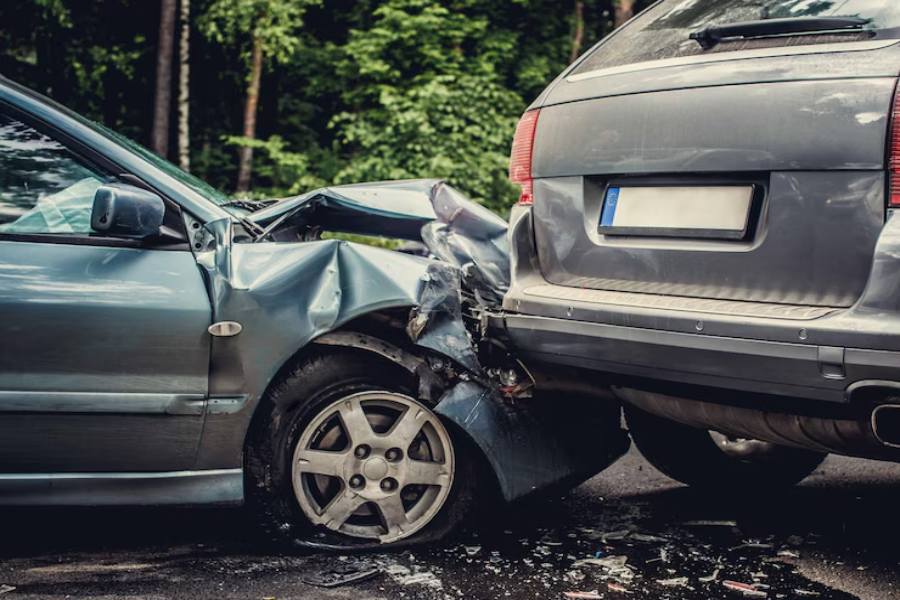Some people seem to get into more car accidents than others—why is that? While it’s true that some crashes are completely unavoidable due to weather, mechanical failures, or other drivers’ mistakes, many accidents follow patterns related to specific driving habits and mindsets. Research shows that certain behaviors and attitudes significantly increase the likelihood of being involved in crashes. Understanding what makes some drivers more accident-prone can help you recognize risky patterns in your own driving and make changes that keep you safer on the road.
Habits That Make Some Drivers More Accident-Prone
Speeding or Rushing Frequently
One of the biggest factors that separates accident-prone drivers from safer ones is the tendency to speed or constantly feel rushed while driving. Drivers who frequently run late often speed to make up time, follow other cars too closely, and make risky maneuvers like darting between lanes or running yellow lights. Speeding reduces reaction time and increases the severity of crashes when they do occur. Even just 5–10 miles per hour over the speed limit can dramatically increase stopping distance and crash risk, making it one of the most common habits among those who experience accidents repeatedly. If you’ve been injured due to a speeding driver, a Bronx car accident lawyer can help you pursue compensation and hold the at-fault party accountable.
Driving While Distracted (Phones, Food, etc.)
Accident-prone drivers often engage in multiple distracting activities while behind the wheel. This includes obvious distractions like texting or talking on phones, but also eating, adjusting music, applying makeup, or even reading while driving. These drivers may think they can multitask effectively, but human brains simply cannot focus on driving and other activities simultaneously. Each distraction, no matter how brief, increases crash risk exponentially.
Ignoring Road Conditions (Rain, Fog, Night)
Some drivers fail to adjust their driving style for different weather and road conditions, which significantly contributes to their accident patterns. Accident-prone drivers often maintain the same speed and following distance whether roads are dry and clear or wet and foggy. They may use the same driving techniques at night as during the day, or drive through snow and ice without accounting for reduced traction. This failure to adapt to changing conditions is a key factor in understanding how to avoid car accidents.
Overconfidence Behind the Wheel
Overconfident drivers often become accident-prone because they overestimate their abilities and underestimate risks. These drivers may believe they’re skilled enough to handle dangerous situations that more cautious drivers would avoid. They might attempt difficult parking maneuvers in tight spaces, merge into small gaps in traffic, or drive aggressively because they think their reflexes are better than average. This overconfidence leads to poor decision-making and increased willingness to take unnecessary risks.
Aggressive Driving or Poor Reactions to Stress
Drivers who frequently experience road rage, tailgate other vehicles, or react angrily to traffic situations tend to have higher accident rates. Aggressive driving includes behaviors like cutting off other drivers, making hostile gestures, or speeding up when someone tries to merge. Stress and anger impair judgment and increase the likelihood of making dangerous decisions. These emotional reactions often create chain reactions that lead to accidents involving multiple vehicles.
How to Break the Pattern and Stay Safer
Learning how to avoid car accidents starts with changing the daily habits that increase risk. Leave 10-15 minutes earlier for destinations to eliminate the pressure to speed or rush. This simple change removes one of the biggest factors that leads to risky driving decisions.
Keep both hands on the wheel and avoid all distracting activities while driving. Put your phone in the glove compartment, eat before getting in the car, and set your music and GPS before starting your trip. If something requires your immediate attention, pull over safely rather than trying to multitask while driving.
Practice defensive driving by always assuming other drivers might make mistakes. Leave extra space between your car and the vehicle ahead, especially in bad weather. Scan the road constantly for potential hazards and have an escape plan in case you need to avoid a dangerous situation.
Stay calm in traffic and avoid taking other drivers’ actions personally. When someone cuts you off or drives aggressively, resist the urge to respond with anger or retaliation. Remember that arriving a few minutes later is always better than not arriving at all.
The Role of Self-Awareness
One of the most important aspects of understanding how to avoid car accidents is developing honest self-awareness about your own driving habits. Many accident-prone drivers don’t realize how their behaviors contribute to their crash patterns. Take time to reflect on your driving honestly—do you often feel rushed? Do you check your phone while driving? Do you get angry at other drivers frequently?
Nobody is a perfect driver, and everyone makes mistakes occasionally. The difference between safer drivers and accident-prone drivers is the willingness to recognize problematic patterns and make changes. Even small adjustments to habits and attitudes can significantly reduce your risk of being in an accident. This applies not only to personal driving but also when you’re behind the wheel for work—such as rideshare drivers. In fact, distracted or aggressive driving is a common factor in Uber accidents, which often lead to serious consequences for both drivers and passengers. Whether you’re a professional or casual driver, mindful habits can make all the difference on the road.
Conclusion
The difference between drivers who experience frequent accidents and those who drive for years without major incidents often comes down to habits, attitudes, and self-awareness. While some crashes are truly unavoidable, many accidents result from preventable behaviors like speeding, distracted driving, and aggressive reactions to stress. By understanding these patterns and making conscious efforts to drive more defensively and calmly, you can dramatically reduce your risk of being involved in crashes. Safer driving doesn’t require being perfect—it just takes awareness, patience, and a few smart habits. By understanding what causes accidents, you’re already on the road to avoiding them.


